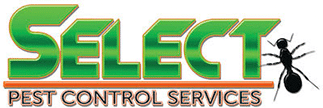PEST CONTROL DONE RIGHT
What Should I Do If I See a Mouse in My House? 3 Mouse Infestation Tips

Mouse problems can be a common and unsettling issue for homeowners. Seeing a tiny intruder scurrying across the floor or nibbling on food can send shivers down your spine. In this blog, we’ll explore the steps you can take when faced with a mouse in your house, from identifying signs of a mouse infestation to effective prevention and removal methods.
Signs of a Mouse Infestation in Your Home
Droppings
One of the most common indicators is the presence of droppings. Mouse droppings are small, dark, and pellet-shaped, typically found near food sources, in cupboards, under sinks, or along baseboards. They are often one of the first visible signs of an infestation, as mice leave droppings wherever they travel. Fresh droppings are dark and moist, while older ones are gray and brittle, indicating whether the infestation is recent or ongoing.
Gnaw Marks
Another clear sign of a mouse infestation is gnaw marks. Mice constantly need to chew to keep their incisors from growing too long, resulting in noticeable damage to various materials around the house. You might find gnaw marks on food packaging, wooden furniture, wiring, and insulation. Fresh gnaw marks are light-colored, becoming darker over time. This chewing can lead to more severe issues, such as electrical fires from damaged wires, making it essential to address the problem promptly.
Odd Noises
Noises within the walls or ceilings, particularly at night, also indicate a mouse infestation. Mice are nocturnal creatures and are most active at night, when you might hear scratching, scurrying, or squeaking sounds. These noises often come from hidden areas like attics, basements, and wall cavities where mice build their nests. Hearing these sounds can be particularly distressing as it suggests the mice move freely through your home’s structure.
Nests & Odors
Finally, evidence of nests and an unusual, musty odor can signal a mouse infestation. Mice create nests from shredded materials such as paper, fabric, and insulation. These nests are usually hidden in secluded, dark places like behind appliances, inside wall cavities, or in attics. The nests often have a strong, unpleasant odor due to the accumulation of droppings and urine, which can permeate through the house.
Why Do Mice Want to Make Your House Theirs?
Before diving into solutions, it’s essential to understand why mice may invade your living space.
Easy Access to Food
A mouse infestation in your home often stems from easy access to food and shelter. Mice are opportunistic feeders and will invade homes where food is readily available. Poor food storage practices, such as leaving food out on countertops or not securing pantry items in sealed containers, can attract mice. Additionally, crumbs, spills, and accessible trash bins can serve as a continuous food supply.
Environmental factors
Houses near fields, wooded areas, or other natural habitats are more susceptible to mouse problems as these rodents can easily migrate from these outdoor areas into human dwellings. Weather changes can drive mice indoors in search of dry and warm conditions. Additionally, homes with cluttered storage spaces, such as garages, attics, and basements, provide ample hiding spots and nesting materials, making them attractive environments for mice to thrive and multiply. Addressing these factors by improving food storage, sealing entry points, and reducing clutter can significantly reduce the risk of a mouse infestation.
Techniques to Prevent a Mouse Infestation
If you want to rodent-proof your home, seal potential entry points and remove attractants. Inspect your home for gaps or cracks, especially around doors and windows, and seal them with appropriate materials. Practice good hygiene by storing food in airtight containers and promptly cleaning up crumbs and spills. Read on for more ways to help these pesky rodents out of your house.
Humane Traps and Removal
Those who prefer a humane approach should consider using live traps. These devices allow you to capture mice without causing harm. After trapping a mouse, carefully release it away from your home, ensuring it has a chance for survival. Humane traps provide an ethical alternative to traditional extermination methods.
Traditional Extermination Methods
If humane methods aren’t suitable for your situation, traditional extermination methods can be effective. Snap traps, glue traps, and poison baits are commonly used options. When using these methods, it’s crucial to follow instructions carefully and place traps in areas frequented by mice.
Seeking Professional Help
Sometimes, mouse infestations may be beyond the scope of DIY solutions. If your efforts prove unsuccessful or the problem persists, don’t hesitate to seek professional pest control assistance. Experts like Select Pest Control Services can assess the extent of the infestation and implement targeted solutions to eradicate the issue.
Encountering a mouse in your house can be a daunting experience, but swift and informed action can effectively address the issue. By understanding mouse behavior, implementing preventive measures, and choosing appropriate removal methods, you can regain control of your living space. Stay vigilant, act promptly, and create an environment that discourages unwanted rodent guests. When the infestation is more severe, call Select Pest Control Services. We can help you say goodbye to these furry critters for good!
